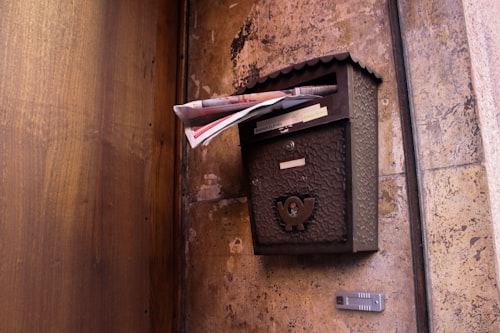Email bounce is a common occurrence in email marketing campaigns. It refers to the situation where an email fails to reach its intended recipient and is returned to the sender's server. In this comprehensive guide, we will explore the reasons why emails bounce, the impact of email bounce on your email deliverability, and effective strategies to address and reduce email bounces.
Chapter 1: What Causes Email Bounces?
There are several factors that can lead to email bounces. Let's examine some of the most common reasons:
Invalid or Non-Existent Email Addresses: When you send an email to an address that doesn't exist or is formatted incorrectly, it will result in a hard bounce.
Mailbox Full: If a recipient's mailbox is full and cannot receive any more messages, your email will bounce back.
Temporary Delivery Issues: Sometimes, email servers experience temporary issues that prevent the delivery of your email. These are known as soft bounces.
SPAM Filters: If your email triggers the recipient's SPAM filters, it may be blocked and result in a bounce.
Blocked Domains or IPs: Some email providers or network administrators may block certain domains or IP addresses, causing your emails to bounce.
Chapter 2: The Impact of Email Bounce
Email bounce can have significant implications for your email marketing efforts and sender reputation:
Reduced Deliverability: High bounce rates can negatively affect your email deliverability. ISPs and email service providers closely monitor bounce rates to determine the reputation of senders.
Damage to Sender Reputation: Consistently high bounce rates can harm your sender reputation, making it more likely for your future emails to end up in SPAM folders or be blocked entirely.
Wasted Resources: Bounced emails consume server resources and impact your email marketing ROI. You spend time, effort, and money on creating and sending emails that never reach the intended recipients.
Missed Opportunities: When emails bounce, you miss out on opportunities to engage with your audience, deliver important information, or drive conversions.
Chapter 3: Strategies to Address Email Bounces
While it's impossible to completely eliminate email bounces, you can take proactive measures to reduce their occurrence and mitigate their impact:
Ensure Data Accuracy: Maintain a clean and updated email list. Regularly verify and validate email addresses to remove invalid or non-existent ones.
Use Double Opt-In: Implement a double opt-in process to confirm the validity of email addresses and reduce the chances of typos or fake emails.
Authenticate Your Emails: Implement authentication protocols like SPF, DKIM, and DMARC to establish your email's authenticity and improve deliverability.
Monitor Bounce Reports: Regularly review bounce reports provided by your email service provider to identify patterns and trends. This information can help you identify and address underlying issues.
Segment Your Email List: Segmenting your email list allows you to send targeted emails to specific groups, increasing the relevance and engagement of your campaigns.
Optimize Email Content: Craft emails that comply with SPAM filter rules and best practices. Avoid using suspicious language, excessive capitalization, and misleading subject lines.
Follow Email Best Practices: Stay updated with email marketing best practices to ensure compliance with regulations and to maintain a positive sender reputation.
Chapter 4: Frequently Asked Questions about Email Bounce
Q1: How can I reduce email bounce rates?
To reduce email bounce rates, focus on maintaining a clean and updated email list, implementing authentication protocols, and following email marketing best practices. Regularly monitor bounce reports and take corrective actions.
Q2: What should I do with hard bounce emails?
Hard bounce emails, which indicate permanent delivery failures, should be removed from your email list immediately. Continuing to send emails to hard bounce addresses can harm your sender reputation.
Q3: Can I re-engage with soft bounce recipients?
Yes, you can attempt to re-engage with soft bounce recipients by analyzing the bounce reasons and taking appropriate actions. However, if the bounces persist, it is advisable to remove them from your list to maintain a healthy sender reputation.
Q4: Are there tools to help with email bounce handling?
Yes, there are various email service providers and specialized bounce handling tools available in the market. These tools can help you automatically process bounces, categorize them, and provide detailed reports to assist in bounce management.
Conclusion
Email bounce is a common challenge in email marketing campaigns, but with the right strategies and best practices, you can effectively address and minimize their impact. By understanding the causes of email bounces, monitoring bounce reports, and implementing proactive measures, you can improve your email deliverability, maintain a positive sender reputation, and maximize the effectiveness of your email marketing efforts.



